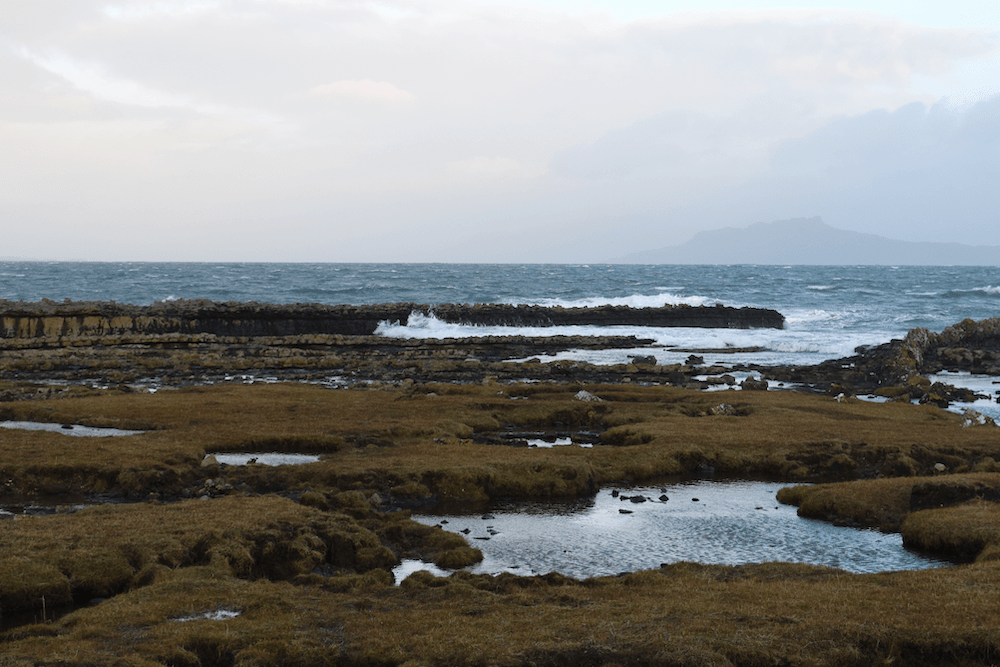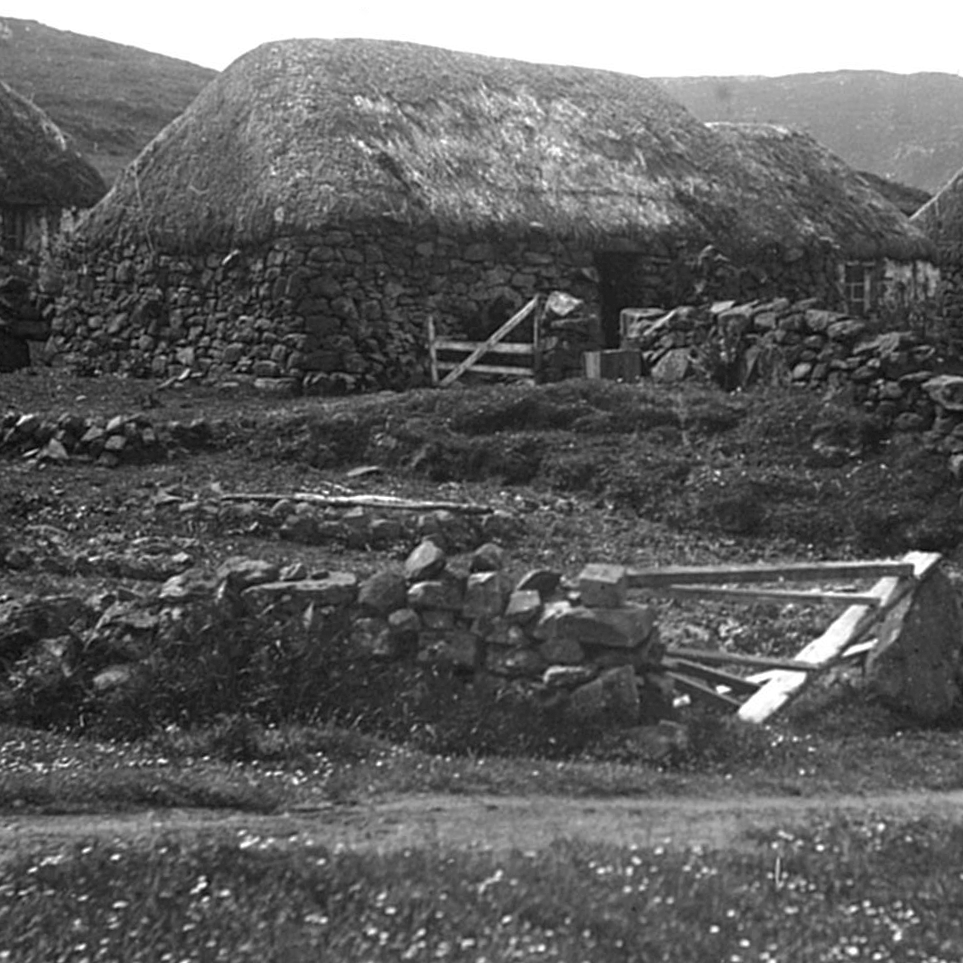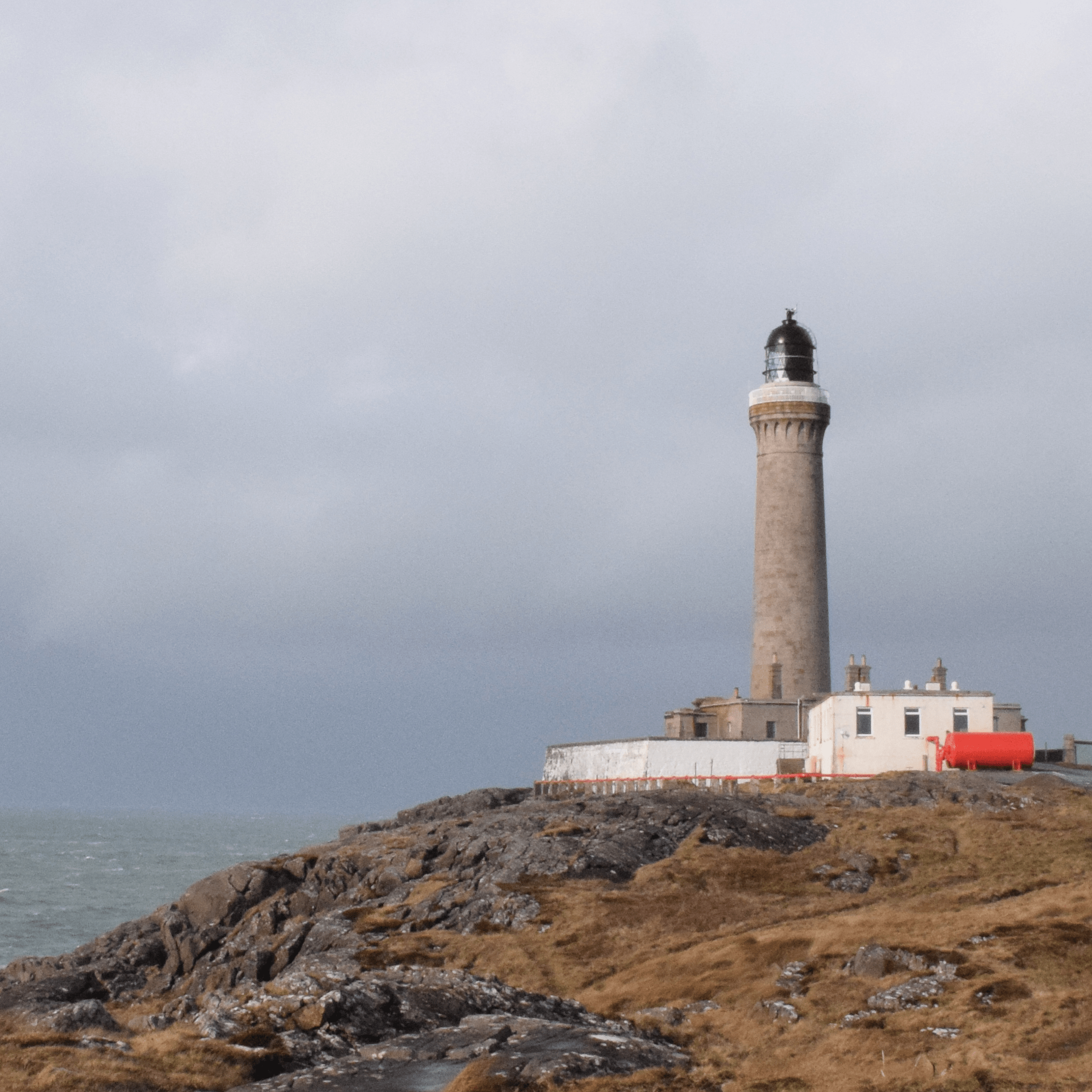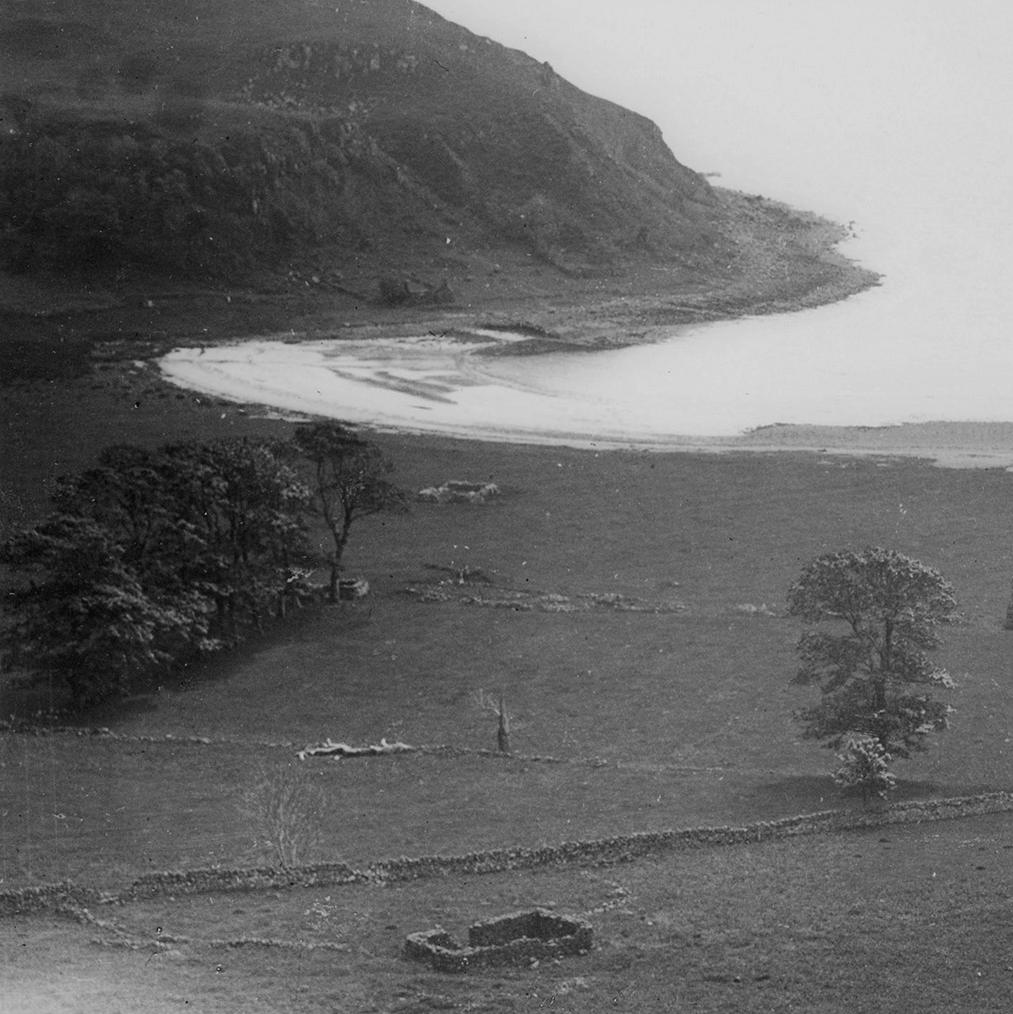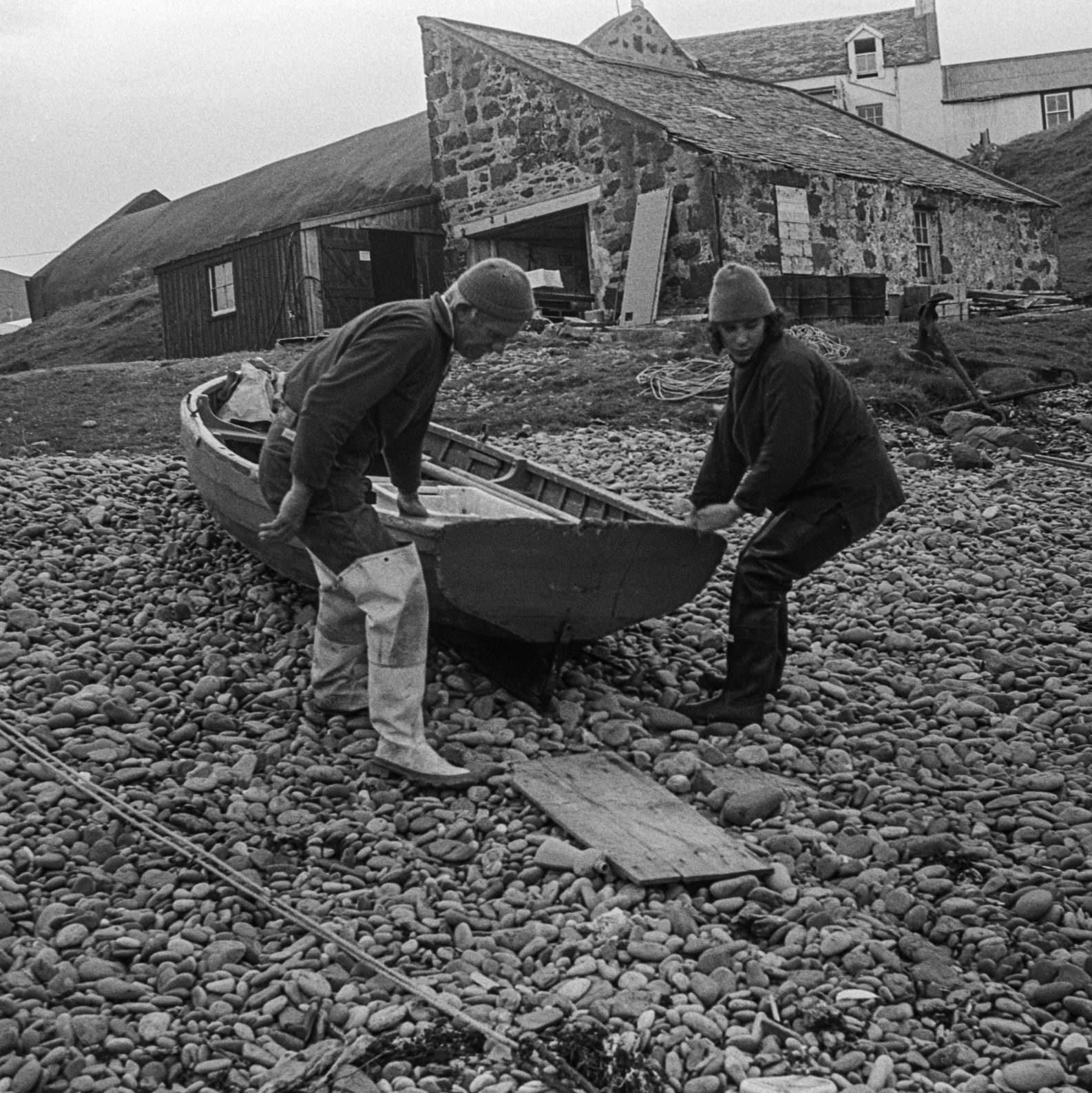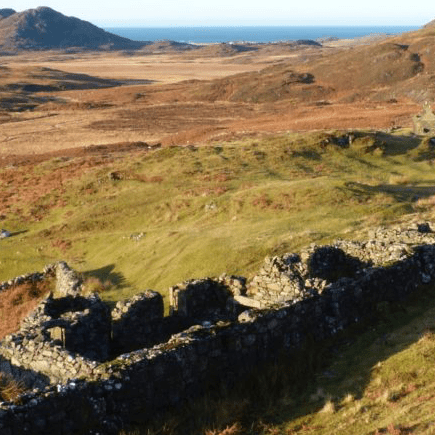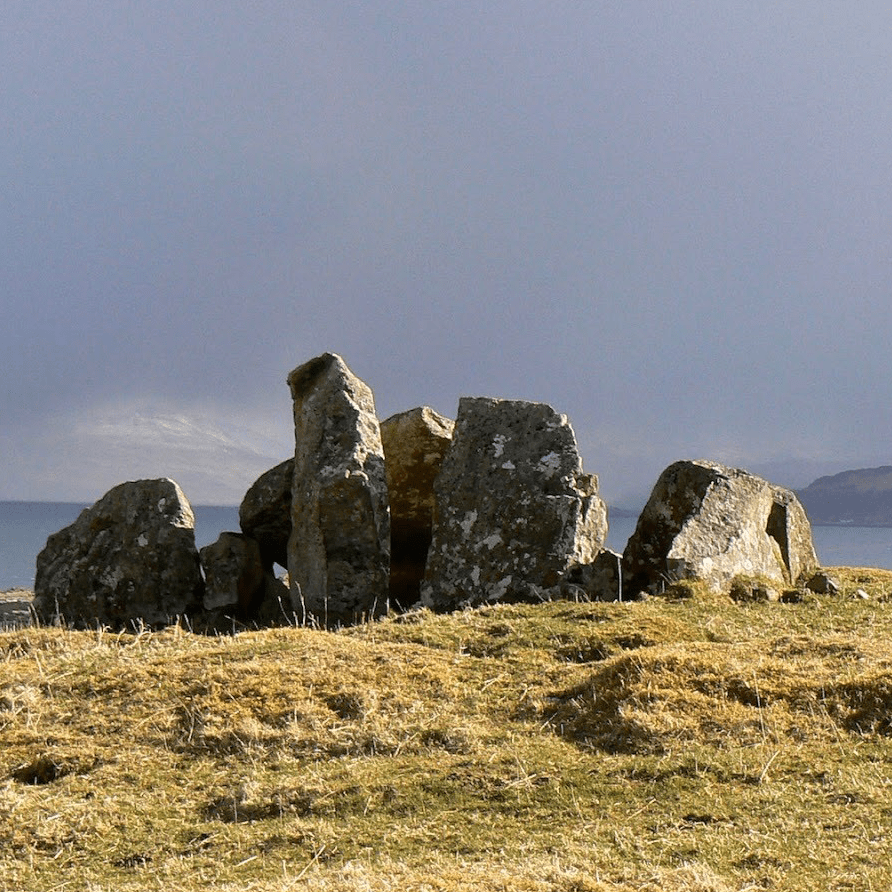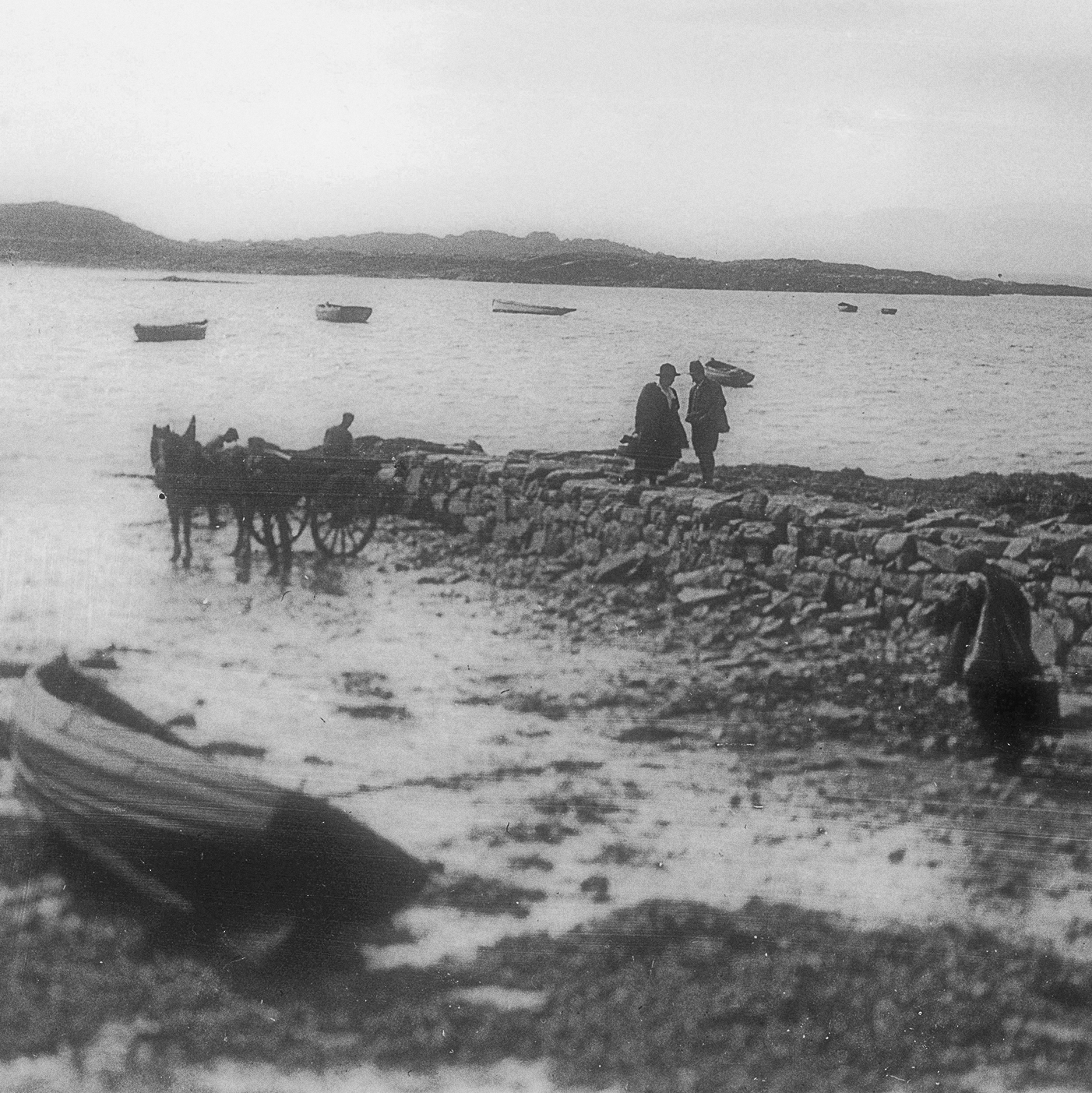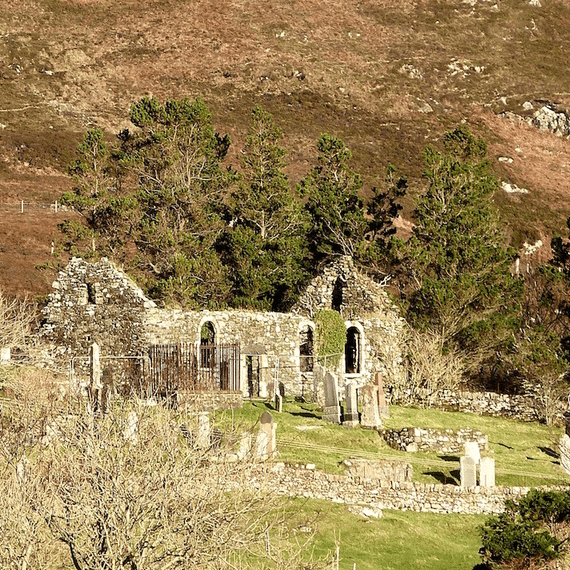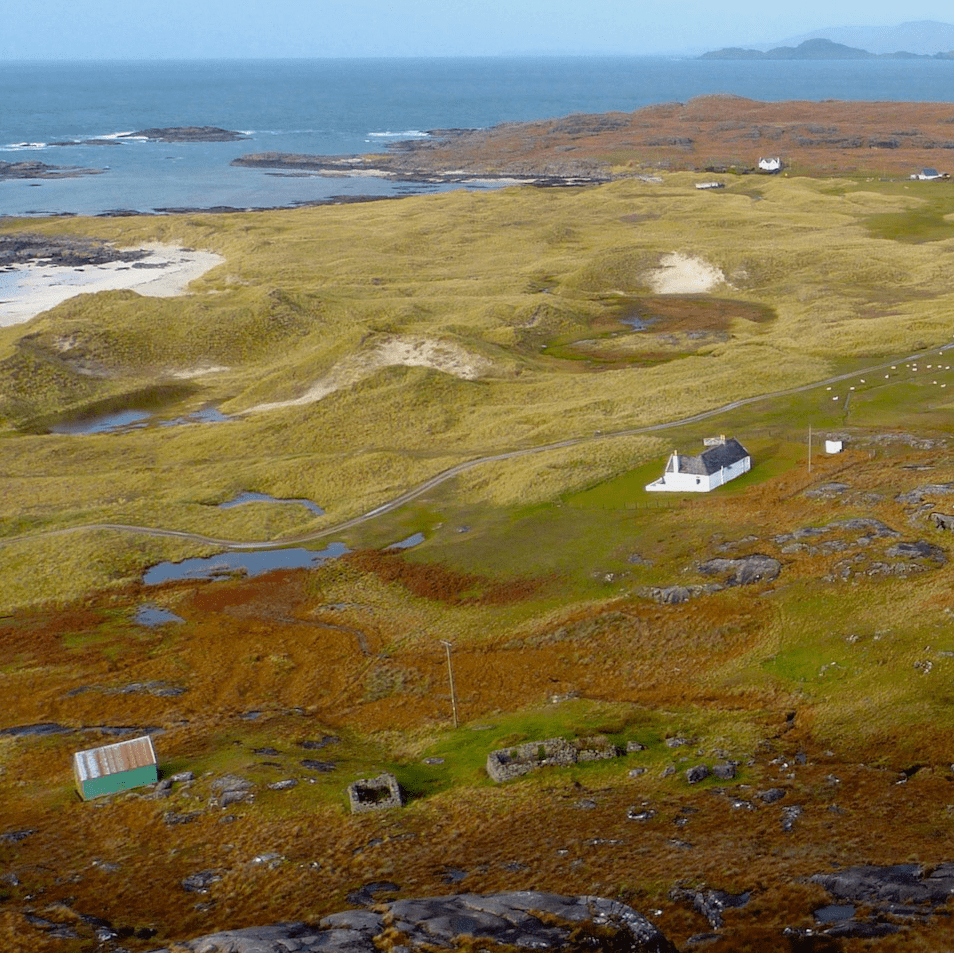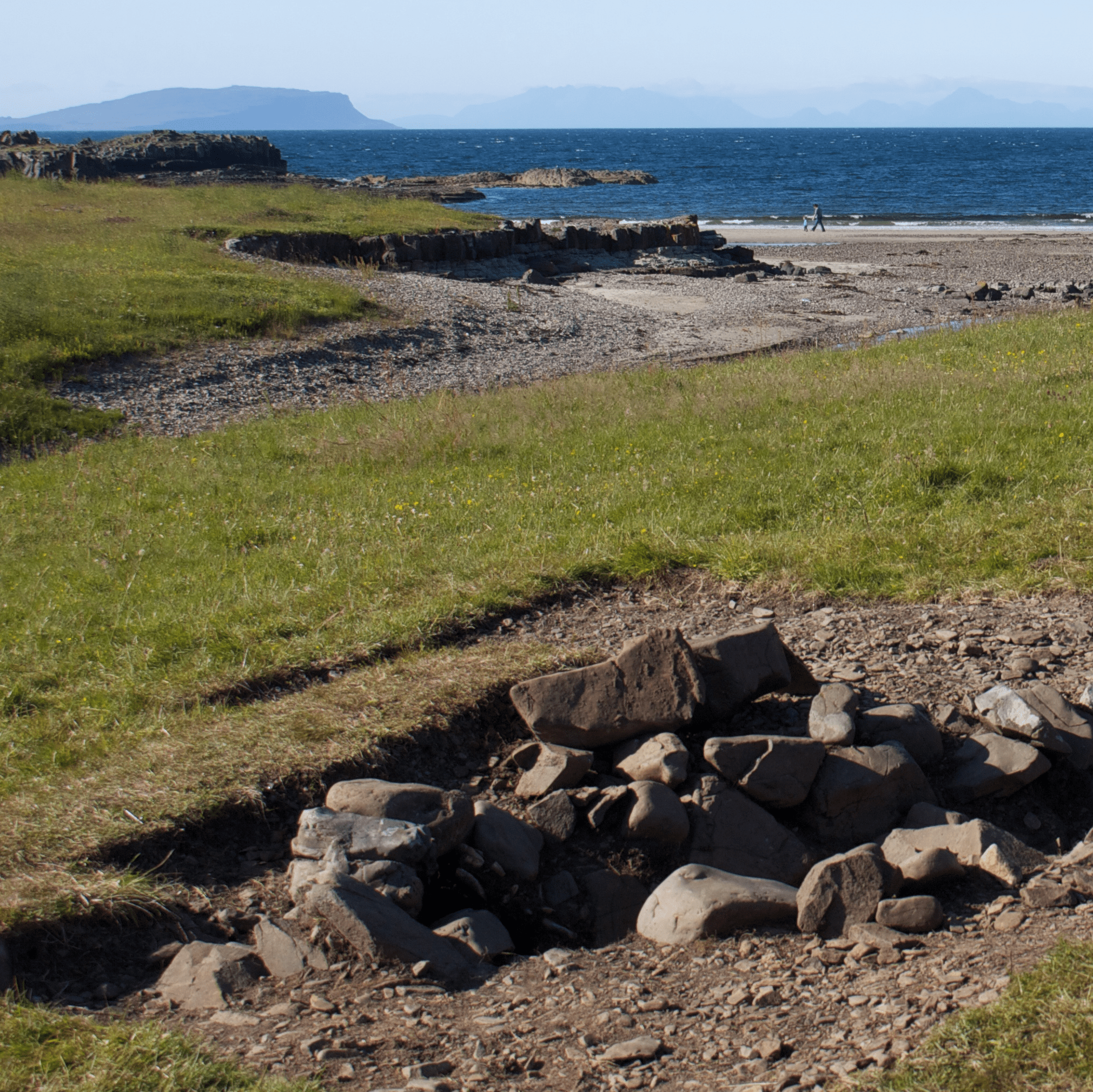Bronze Age remains
Sanna
Brief History
Historic remains found at Sanna have included a bronze brooch and pin dated 8th or 9th century, middens containing pottery made by Bronze Age people, flint knives, axe heads, a barbed arrowhead, and a cremation site consisting of burnt bones.
The 1881 census lists 23 households with a total of 105 people. Many of the heads of households are listed as women and there is a distinct lack of work age men. This is due to working age men having to subsidise their livelihoods from their crofts by working away, often at sea, leaving wives, daughters and sisters to run some of the crofts.
Click here to find out more about Sanna
Dig into layers of history
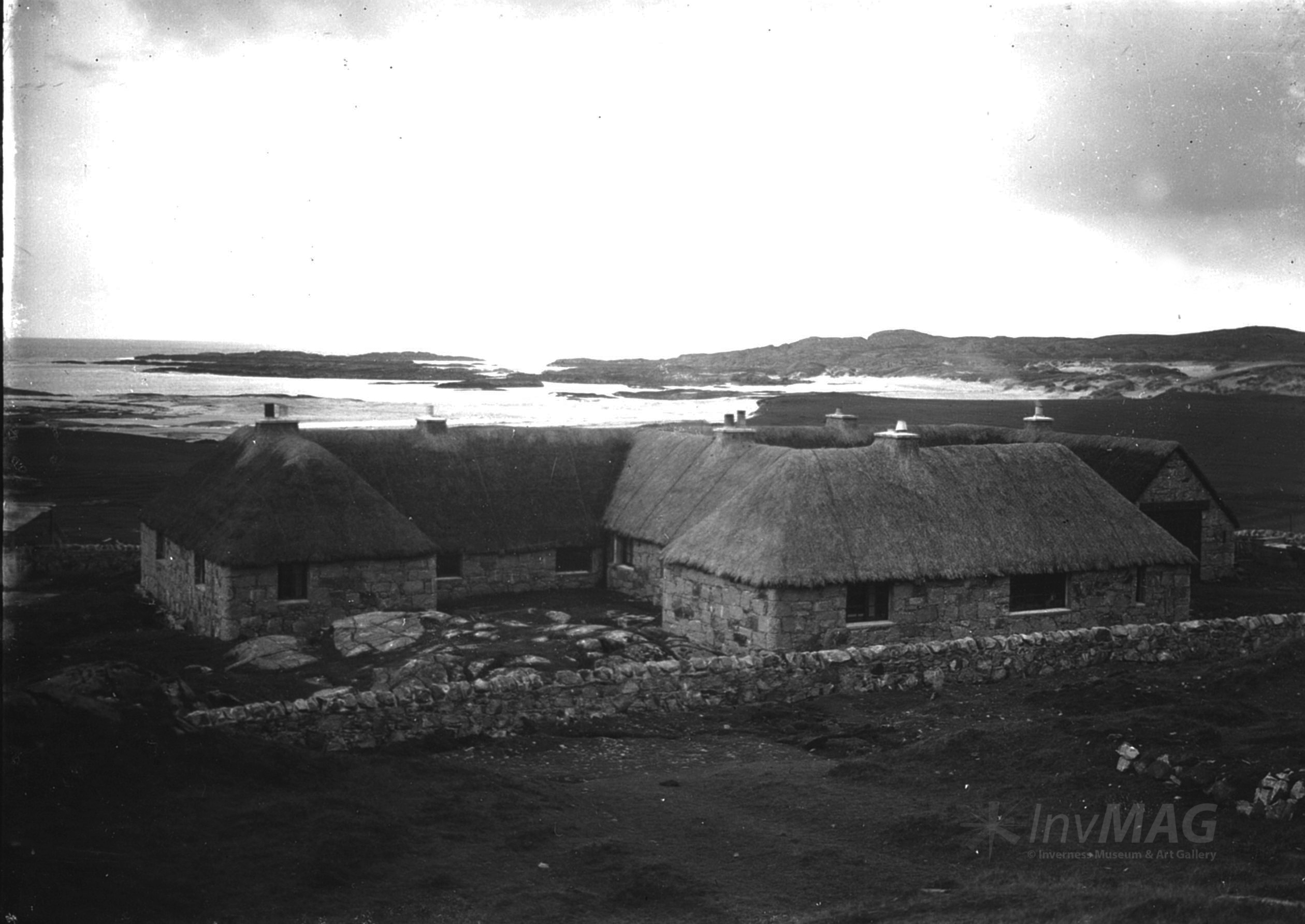
© MEM Donaldson Collection, Inverness Museum and Art Gallery, High Life Highland
Sanna expanded as a crofting township when people moved here after being evicted from other townships on Ardnamurchan. There wasnʼt enough productive land available for each family so while some men worked away, women often crofted the land here and raised animals in the common grazing area. When not helping on the croft, children would walk to school in Achosnich.
People lived in Sanna during the prehistoric period.
Prehistoric objects found by archaeologists here include pottery made by the Bronze Age people, a barbed arrowhead, and a ground stone axe.
Sanna Bheag
Now a private dwelling, photographer and writer MEM Donaldson lived at Sanna Bheag, a dwelling built with local materials and labour. Her work shows the every day lives of Ardnamurchan residents of the time.
